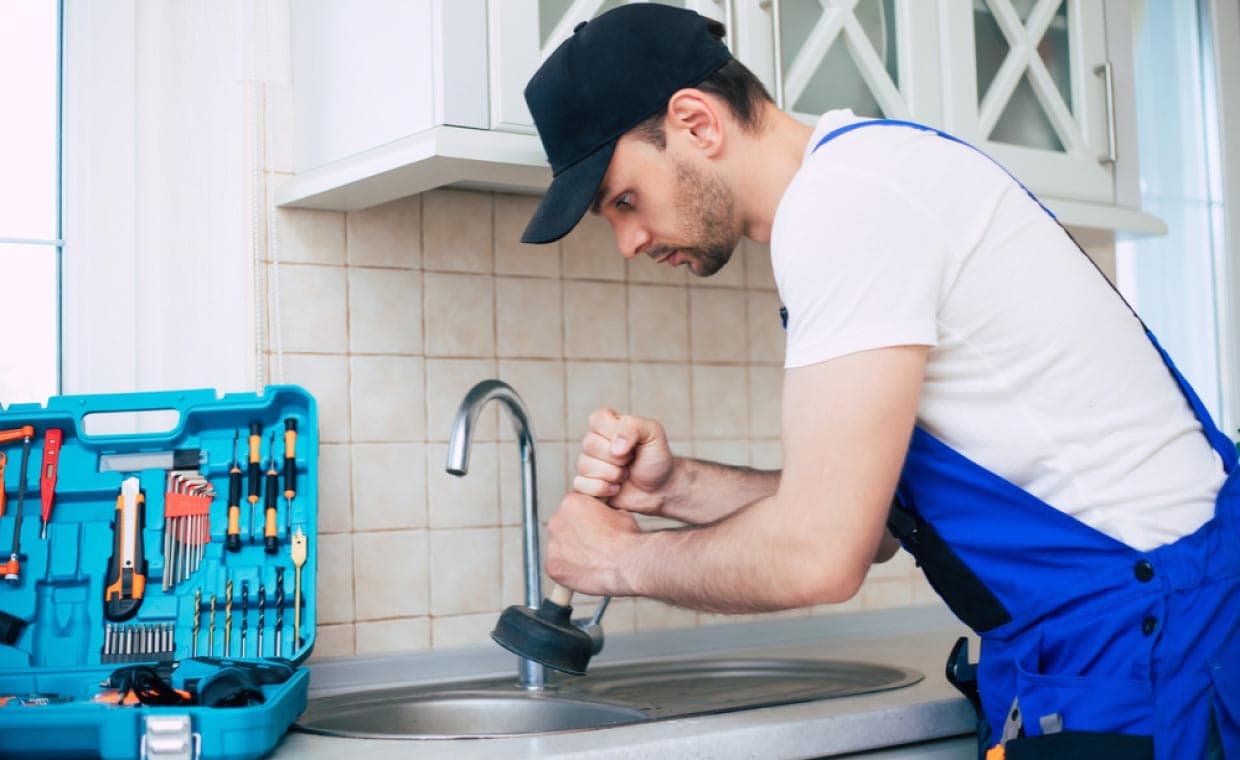
Table of Contents
A blocked plumbing vent can lead to unpleasant odors, slow drainage, and even pressure imbalances in your plumbing system. Vent pipes play a crucial role in maintaining airflow within the plumbing vents system, allowing waste to move freely. Learning how to unclog a vent pipe can help restore your plumbing’s functionality. Here’s a step-by-step guide to clearing a blockage in your plumbing vent.
What Are Plumbing Vents System and Why Do They Get Clogged?

Purpose of Plumbing Vents System
Plumbing vent pipes expel sewer gases and allow fresh air into the drainage system. This ensures smooth water flow and prevents the buildup of pressure or vacuum in the pipes.
Common Causes of Vent Pipe Clogs
- Debris or Leaves: Outdoor vents can collect leaves, dirt, or bird nests.
- Animal Obstructions: Small animals or insects may build nests inside the pipes.
- Ice Buildup: In colder climates, ice can block vent openings.
Signs of a Clogged Vent Pipe

Before tackling the issue, identify common symptoms that indicate you need to unclog plumbing vent pipes:
- Gurgling sounds from drains or toilets.
- Foul odors near plumbing fixtures.
- Slow-draining sinks or tubs.
- Water backing up into sinks or tubs after flushing.
Tools You’ll Need
- A ladder (to access roof vents).
- Flashlight for inspecting the vent.
- Garden hose with a high-pressure nozzle.
- Plumber’s snake or auger.
- Safety gear (gloves and goggles).
Step-by-Step Guide: How to Unclog Vent Pipe

Step 1: Ensure Safety First
Before attempting to clear the vent, wear safety gear and ensure your ladder is secure. Always have someone nearby for assistance.
Step 2: Locate the Vent Pipe
Find the vent pipe on your roof. It’s typically a small, vertical pipe sticking out from the roof, often near the bathroom or kitchen.
Step 3: Inspect the Vent
Use a flashlight to check the pipe for visible obstructions such as leaves or nests. If the blockage is within reach, you may remove it manually.
Step 4: Use a Garden Hose
Attach a high-pressure nozzle to your garden hose and insert it into the vent pipe. Spray water into the pipe to dislodge and flush out debris. Ensure the water flows freely through the pipe, which indicates the blockage has cleared.
Step 5: Use a Plumber’s Snake
If water doesn’t clear the blockage, use a plumber’s snake or auger. Insert the snake into the vent and push it down to break up any clogs. Rotate the handle to ensure the auger navigates through bends and clears the obstruction.
Step 6: Check for Ice (If Applicable)
In colder climates, ice buildup can block the vent pipe. Pour warm (not boiling) water down the pipe to melt the ice safely. Avoid using excessive force to prevent damaging the pipe.
Step 7: Test the Drainage System
After clearing the vent, flush your toilets and run water in sinks to check if the issue is resolved. Improved drainage and eliminated gurgling sounds indicate success.
Preventing Future Vent Clogs

1. Install Vent Covers
Place protective covers over vent openings to keep debris and animals out.
2. Regular Inspections
Check your plumbing vents seasonally to ensure they remain clear and functional.
3. Trim Overhanging Trees
Cut back any branches that could drop leaves or debris into the vent pipe.
When to Call a Professional
While DIY methods are effective for minor clogs, some situations require professional expertise:
- Persistent blockages despite repeated attempts to clear the vent.
- Visible damage to the vent pipe.
- Unusual smells or noises that suggest deeper plumbing issues.
Super Brothers offers professional solutions for clearing and maintaining vent pipes. With our expert services, you can prevent future problems and keep your plumbing system running smoothly.
Conclusion
Understanding how to unclog a vent pipe ensures your plumbing vents system operates effectively. By following these steps and maintaining your vents, you can avoid costly repairs and enjoy a hassle-free drainage system.
Also Read: What You Can Do to Maintain Your Plumbing System?






























